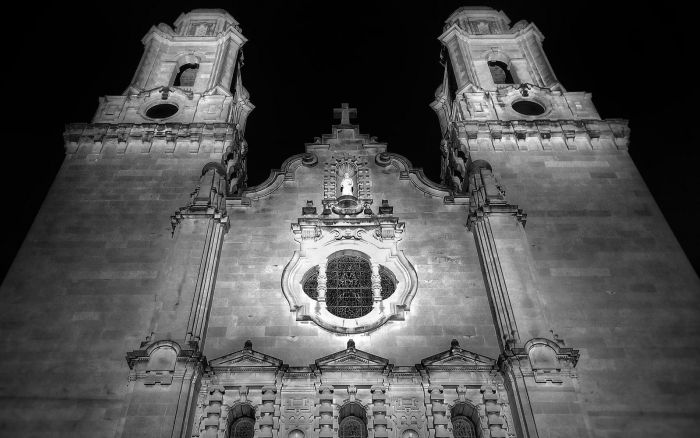This One’s for the Presbyteer

I believe that Keith Ghormley has expressed an admiration for Saint Cecilia’s Cathedral several times on his blog, and I don’t blame him. When I lived in Omaha, our house was within spitting distance of its two towers, and every time I rode my bike to my friend’s house, I went right underneath it. It’s a magnificent building, the very epitome of a cathedral, and it still remains the most distinctive part of Omaha’s skyline for me to this day.
Everytime he mentions Saint Cecilia’s — or any other “old-fashioned” church building — he laments the fact that us Protestants can’t seem to build equally impressive structures, for any number of reasons. And the ones that we do build resemble shopping malls more than anything else. But I don’t think it’s just us Protestants. If “Ten Myths of Contemporary Church Architecture” is any indication, Roman Catholics have also struggled with this issue.
Some of the points that author Stroik raise jibe quite nicely with the series that my adult study has been going through on the nature and purpose of the Church — as well as thoughts that my friends and I have often had concerning the arts in general, and their role within the Church. Take, for example, these two myths:
5. The money spent on churches is better spent on serving the less fortunate, feeding the hungry and educating the young.
If the church were merely a meeting place this view would be legitimate. However, a beautiful church is also a house for the poor, a place of spiritual feeding, and a catechism in stone. The church is a beacon and a city set on a hill. It can evangelize, by expressing the beauty, permanence, and transcendence of Christianity. Most importantly, the church building is an image of our Lord’s body, and in constructing a place of worship we become like the woman anointing Christ’s body with precious ointment. (Mark 14:3 – 9).
8. The Catholic Church should be building the most avant-garde architecture of its day, just as it has throughout history.
For fifteen hundred years, and even up until World War II, the Roman Catholic Church was considered the finest patron of art and architecture. The Church formed Christian artists and architects who in turn influenced the architecture of the secular realm. During the last half century, however, the roles have changed, and the Church has been following the lead of the secular culture and architects who have been formed in a non-Catholic world view.
I don’t think you necessarily have to be Roman Catholic to agree with those points.